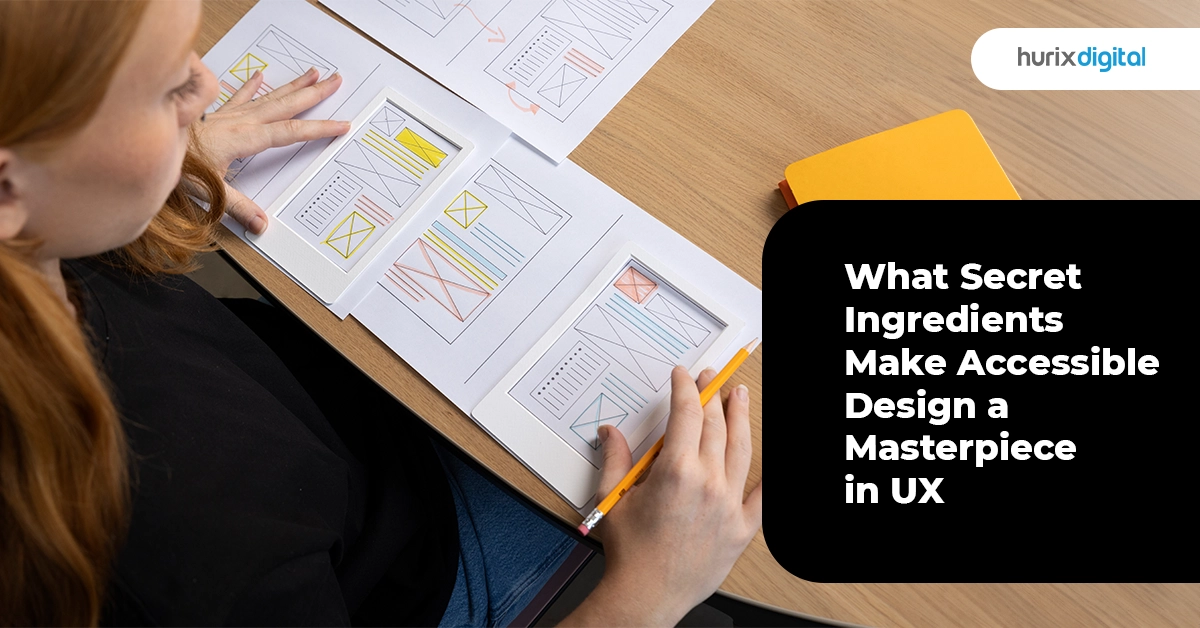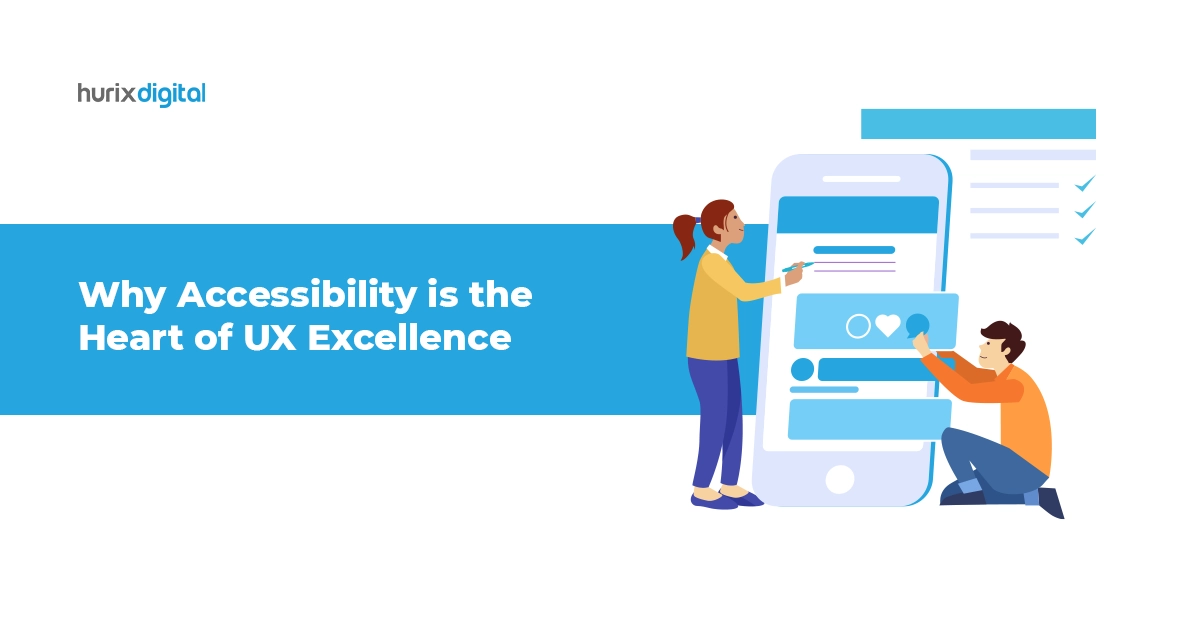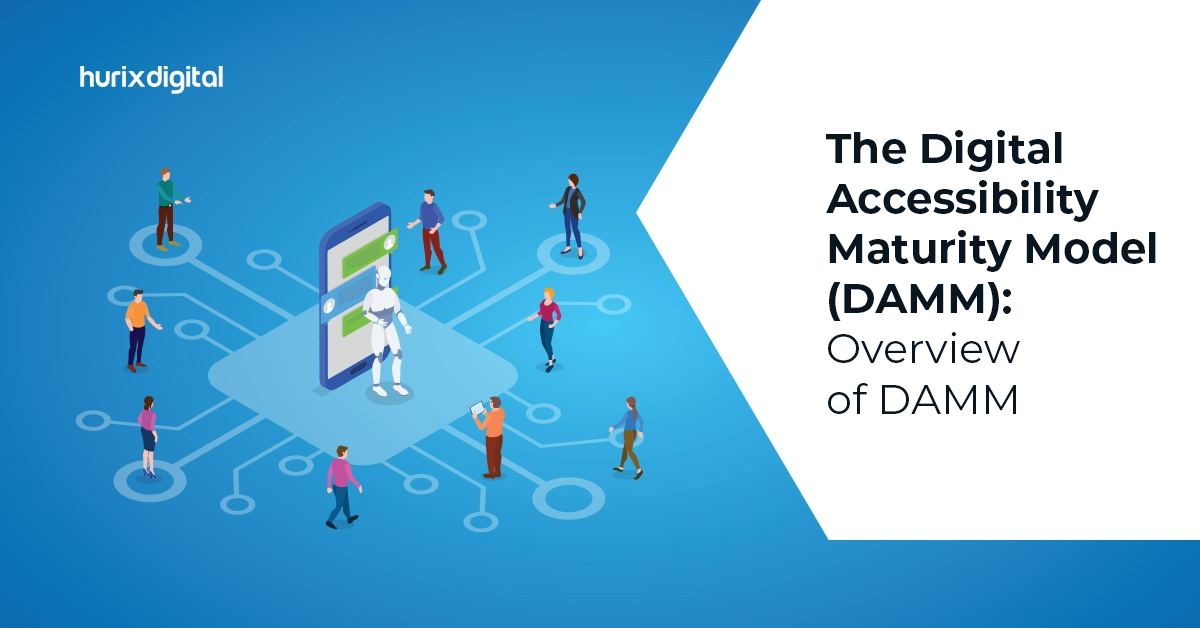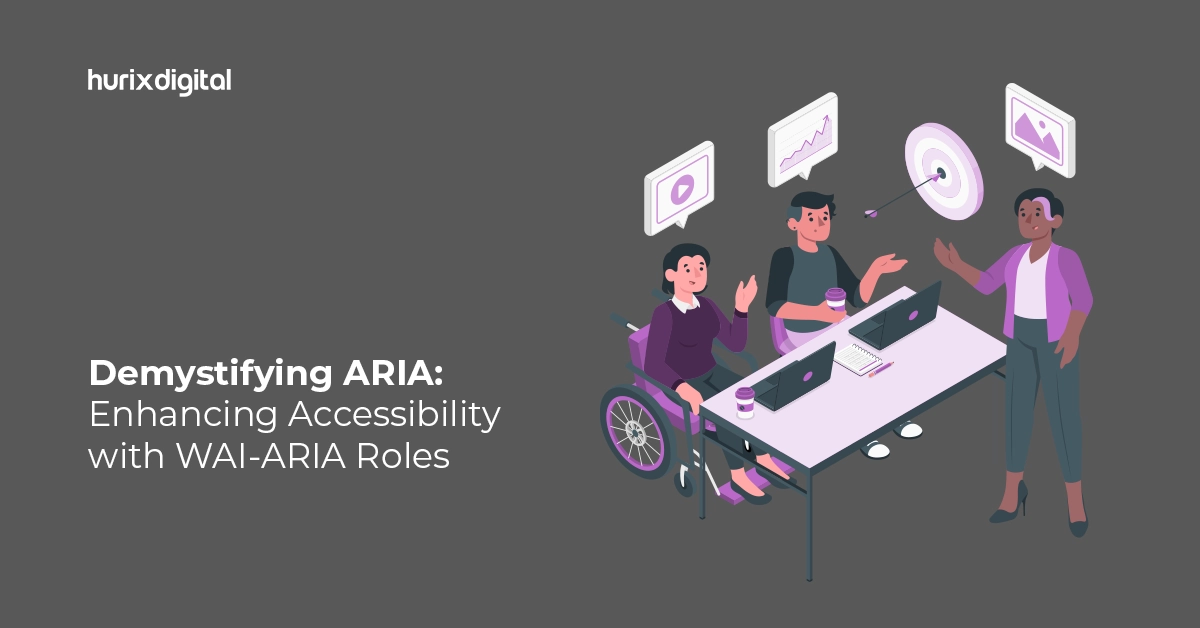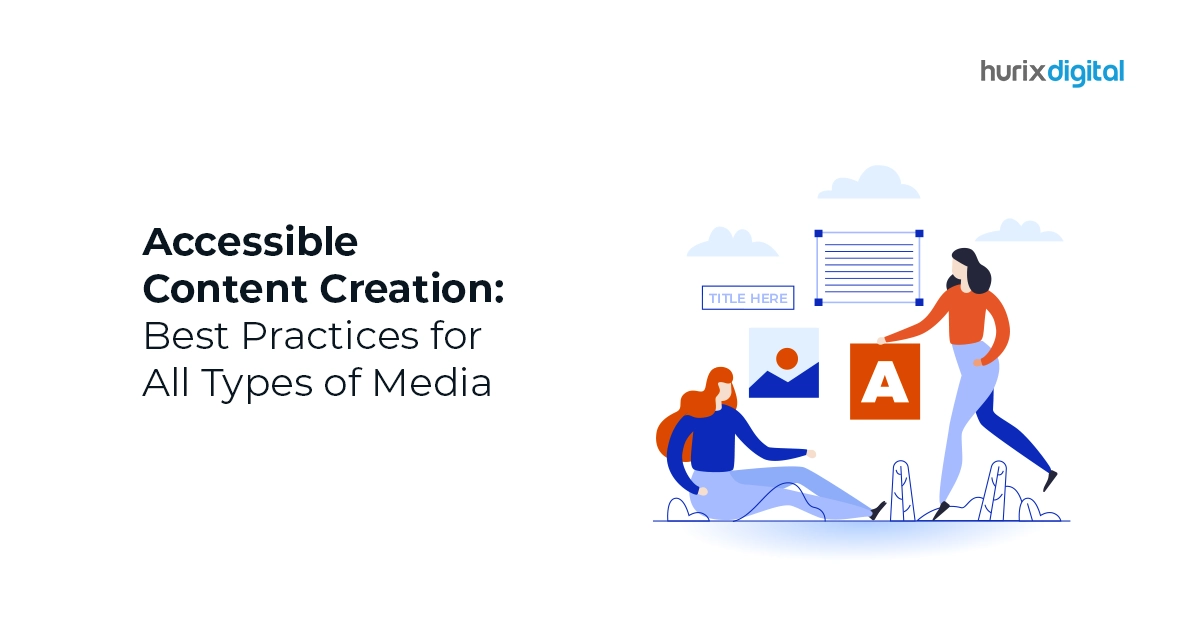Summary
Explore the world of accessible design in UX and uncover the essential ingredients that transform it into a masterpiece. From user-centric and human-centered principles to best practices and inclusive design thinking, this article delves into the core elements that define digital accessibility.
In the dynamic world of User Experience (UX) design, creating a masterpiece involves more than just aesthetic appeal. It’s about ensuring inclusivity and usability for everyone, regardless of their abilities or disabilities. Accessible design is the cornerstone of a user-centric and human-centered approach, weaving together a tapestry of elements that make the user experience seamless, engaging, and truly transformative.
Table of Contents:
- Understanding Accessibility in UX: A Fundamental Imperative
- The Key Ingredients
- The Business Case for Accessible UX
- The Impact of Digital Accessibility: Beyond Compliance to Innovation
- Hurix Digital: Your Partner in the Journey towards Accessibility
- Conclusion
Understanding Accessibility in UX: A Fundamental Imperative
Accessibility in UX refers to the practice of designing digital products and services that can be easily accessed and used by people of all abilities. Whether it’s a website, mobile application, or any digital interface, the goal is to ensure that everyone, including those with disabilities, can navigate, understand, and interact effectively.
The Key Ingredients:
a) User-Centric Design: Putting the User First –
At the heart of accessible design lies the principle of user-centricity. This involves understanding the needs, preferences, and challenges of the users. By conducting user research, designers can gain insights into different user personas, including those with disabilities. This empathetic approach forms the foundation of an accessible masterpiece in UX.
b) Human-Centered Design: Designing for Real People –
Human-centered design takes the user-centric approach a step further by involving the end-users in the design process. By engaging with individuals who have diverse abilities, designers gain valuable feedback, ensuring that the final product meets the real needs of its intended audience. This collaborative process fosters innovation and leads to solutions that are genuinely inclusive.
c) Accessibility Best Practices: A Blueprint for Success –
Implementing accessibility best practices is crucial for creating a masterpiece in UX. This involves adhering to guidelines such as the Web Content Accessibility Guidelines (WCAG), which provide a framework for making web content more accessible. This includes considerations for text alternatives, keyboard navigation, color contrast, and more. Following these guidelines ensures that digital experiences are perceivable, operable, and understandable for all users.
d) Inclusive Design Thinking: Beyond Compliance –
While guidelines provide a baseline for accessibility, true mastery is achieved by embracing inclusive design thinking. This involves going beyond mere compliance and actively seeking ways to enhance the user experience for everyone. By considering diverse perspectives during the design process, designers can uncover opportunities to create features that benefit a broad audience.
e) Cross-Functional Collaboration: Unifying Perspectives –
Building a masterpiece in accessible design requires collaboration across disciplines. Designers, developers, content creators, and accessibility experts must work together seamlessly. This collaborative effort ensures that accessibility considerations are woven into every stage of the design and development process, resulting in a cohesive and inclusive user experience.
Also Read: How Service Design Can Help Your Team to Build Accessible and Inclusive Digital Products?
The Business Case for Accessible UX
An obvious driver for “Accessibility in UX” flows from legal motivations like the Americans with Disabilities Act (ADA) or UK’s Equalities Act with mandates around digital inclusion. Mitigating accessibility gaps shields enterprises from lawsuits and related brand impacts.
However, beyond playing catchup with compliance, the biggest incentive for elevating user experience via accessibility ties into unlocked business advantages like:
- Expanded audiences and revenue: Capturing underserved segments dealing with limitations
- Higher customer satisfaction and lower service costs: More independent and consistent experiences
- First-mover edge with inclusive designs: Mainstream releases of niche assisted solutions
- Multiplier effects on overall usability benefiting all: Universal reach at no incremental effort
The Impact of Digital Accessibility: Beyond Compliance to Innovation
Digital accessibility is not just a legal requirement; it is a catalyst for innovation. When designers prioritize accessibility, they open the door to a larger audience and stimulate creativity in problem-solving. An accessible masterpiece is not confined by limitations but thrives on the diversity of its users.
By incorporating accessibility from the outset, designers create products and services that are more adaptable, scalable, and future-proof. It’s not just about meeting minimum standards; it’s about exceeding expectations and setting new benchmarks for excellence.
Also Read: How Digital Accessibility Companies Help You Promote Accessibility
Hurix Digital: Your Partner in the Journey towards Accessibility
In the realm of accessible design, Hurix Digital stands out as a leading ally for organizations striving to create digital experiences that are truly inclusive. With a wealth of expertise in UX design and digital accessibility, Hurix Digital offers tailored solutions to elevate your products and services.
Embark on a transformative journey with Hurix Digital. Discover how our expertise in accessible design can redefine your digital experiences. Contact us today for a consultation.
Conclusion
In conclusion, accessible design in UX is not a checkbox but a masterpiece in the making. It involves a harmonious blend of user-centricity, human-centered design, adherence to best practices, inclusive thinking, and collaborative efforts. As we continue to push the boundaries of digital innovation, let accessibility be the guiding star, leading us to create experiences that leave a lasting impact on every user.


